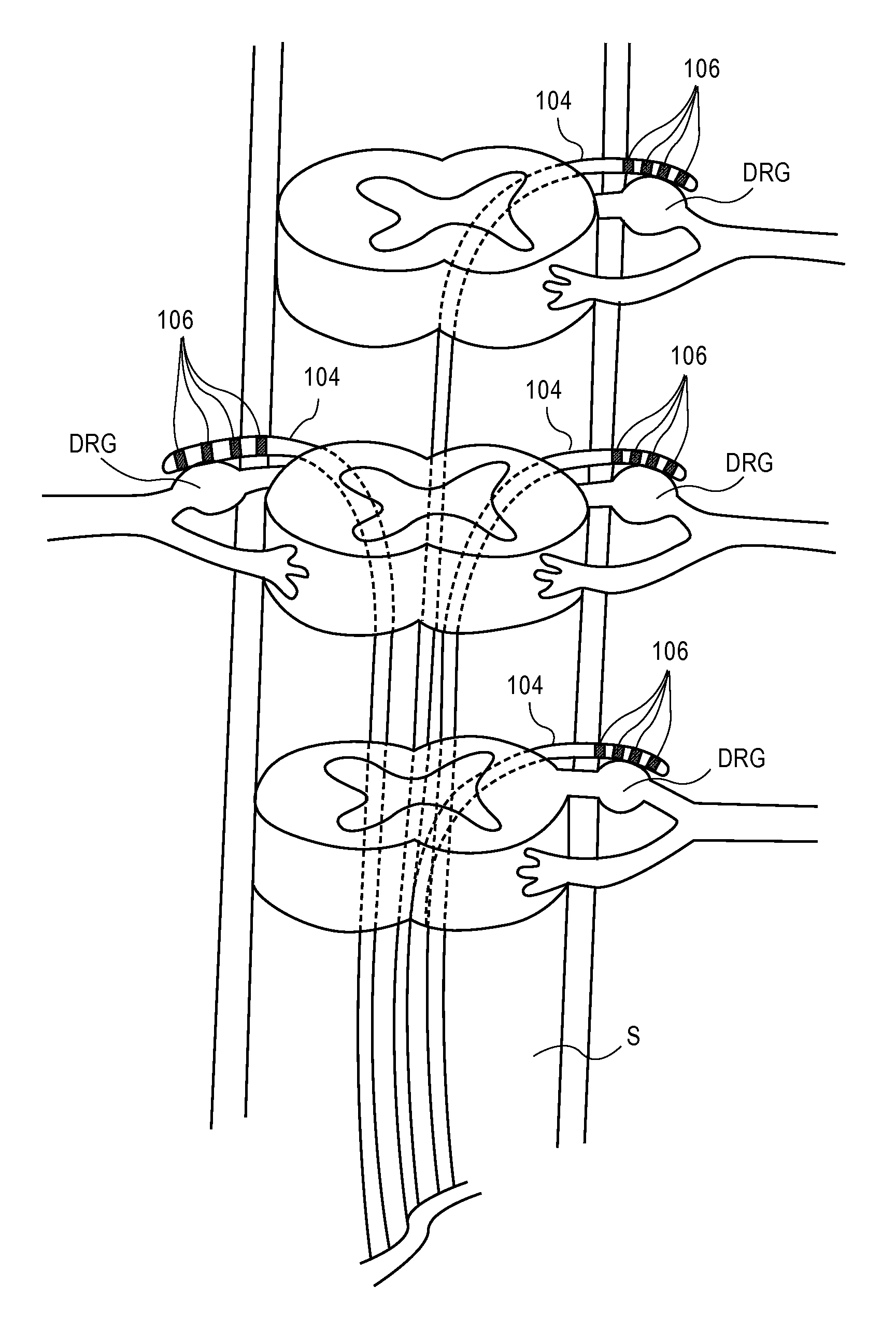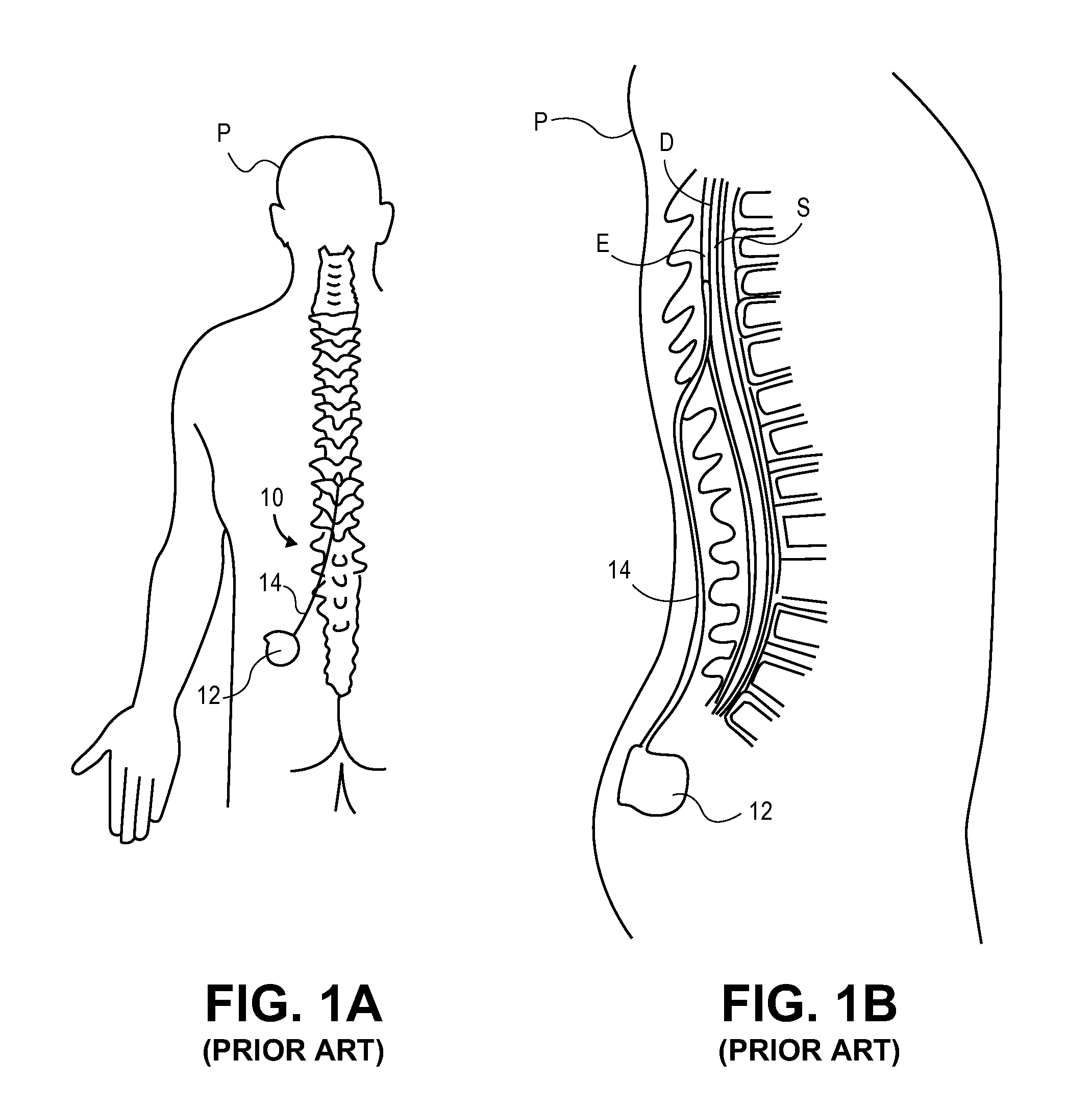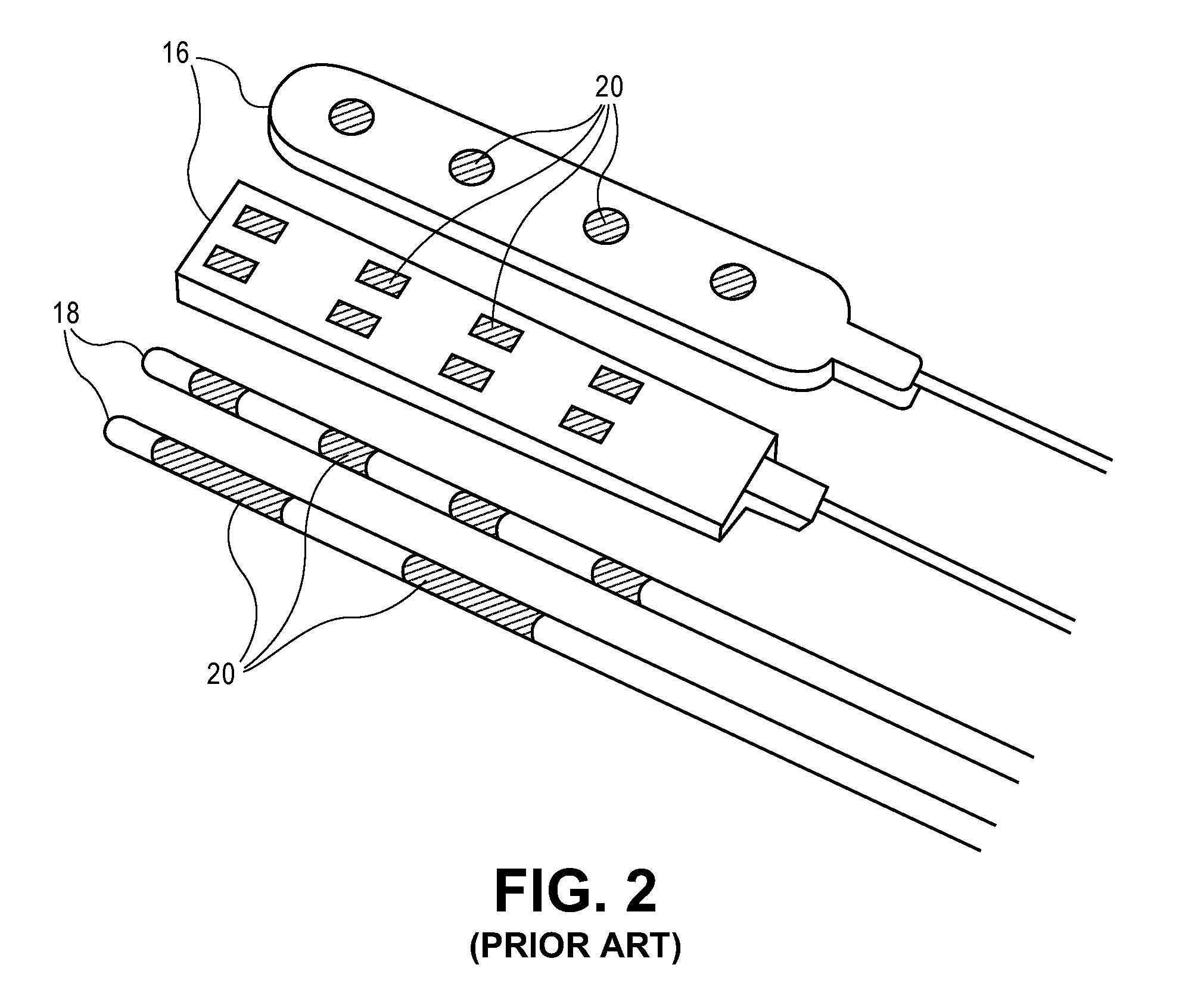Selective stimulation systems and signal parameters for medical conditions
a technology of selective stimulation and signal parameters, applied in the direction of spinal electrodes, internal electrodes, therapy, etc., can solve the problems of excessive tingling, affecting the quality of life of a person, and requiring more energy,
- Summary
- Abstract
- Description
- Claims
- Application Information
AI Technical Summary
Benefits of technology
Problems solved by technology
Method used
Image
Examples
Embodiment Construction
[0071]In some embodiments, a target DRG is stimulated with a lead having at least one electrode thereon. The lead is advanced through the patient anatomy so that the at least one electrode is positioned on, near or about the target DRG. The lead is sized and configured so that the electrode(s) are able to minimize or exclude undesired stimulation of other anatomies. Such configuration may include a variety of design features, including signal parameters, which will be described herein.
[0072]FIG. 7 illustrates an embodiment of an implantable stimulation system 100 of the present invention. The system 100 includes an implantable pulse generator (IPG) 102 and at least one lead 104 connectable thereto. In preferred embodiments, the system 100 includes four leads 104, as shown, however any number of leads 104 may be used including one, two, three, four, five, six, seven, eight, up to 58 or more. Each lead 104 includes at least one electrode 106. In preferred embodiments, each lead 104 in...
PUM
 Login to View More
Login to View More Abstract
Description
Claims
Application Information
 Login to View More
Login to View More - R&D
- Intellectual Property
- Life Sciences
- Materials
- Tech Scout
- Unparalleled Data Quality
- Higher Quality Content
- 60% Fewer Hallucinations
Browse by: Latest US Patents, China's latest patents, Technical Efficacy Thesaurus, Application Domain, Technology Topic, Popular Technical Reports.
© 2025 PatSnap. All rights reserved.Legal|Privacy policy|Modern Slavery Act Transparency Statement|Sitemap|About US| Contact US: help@patsnap.com



